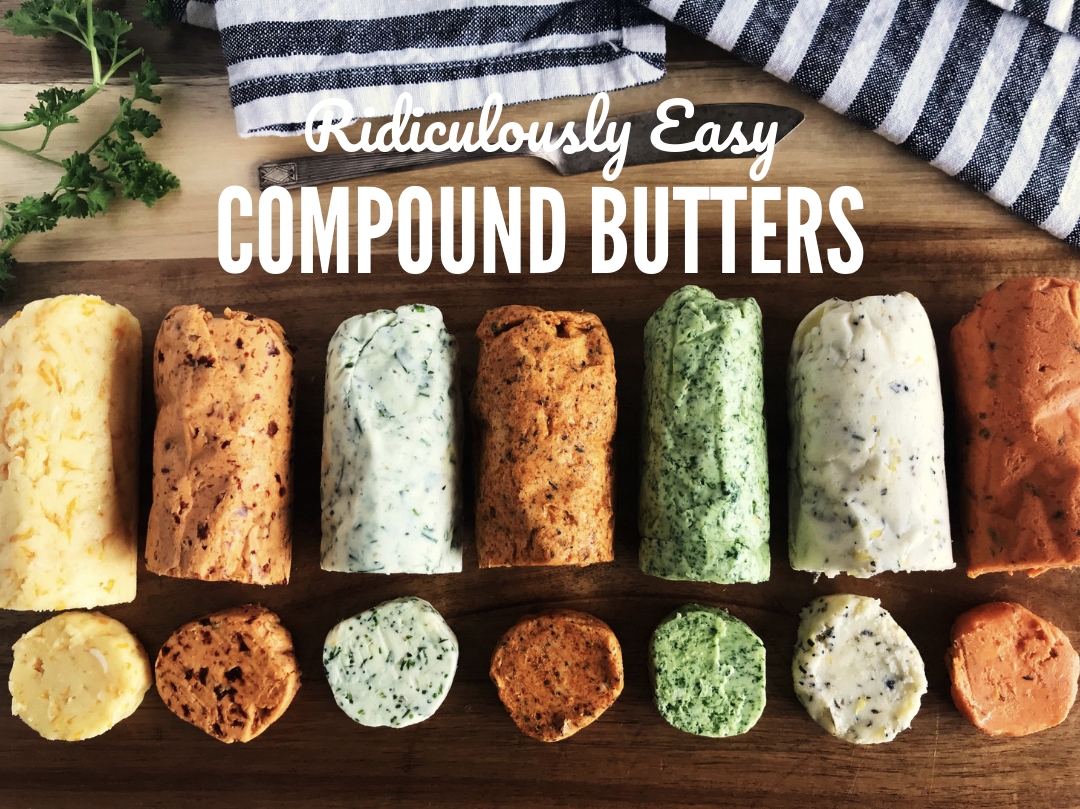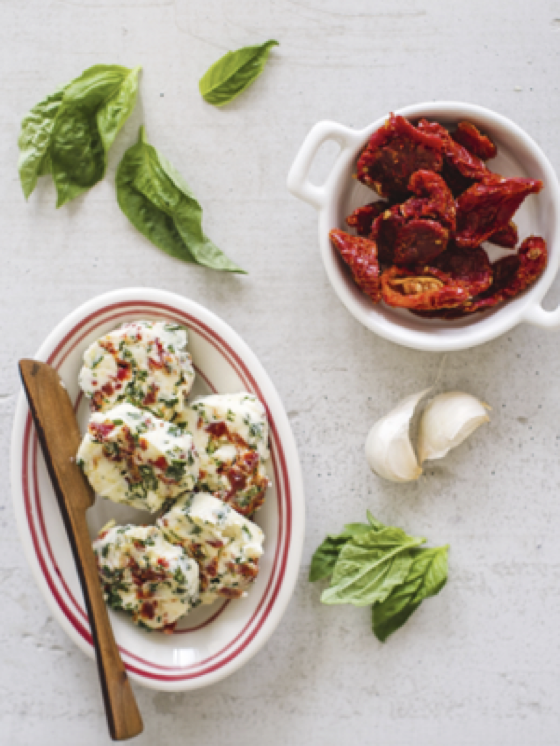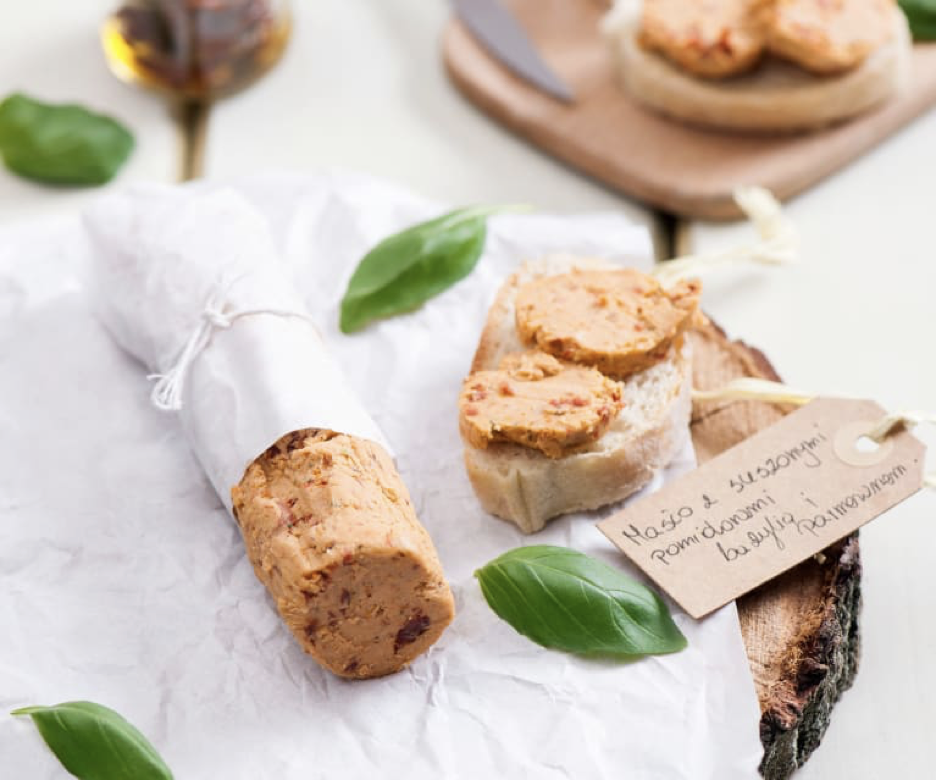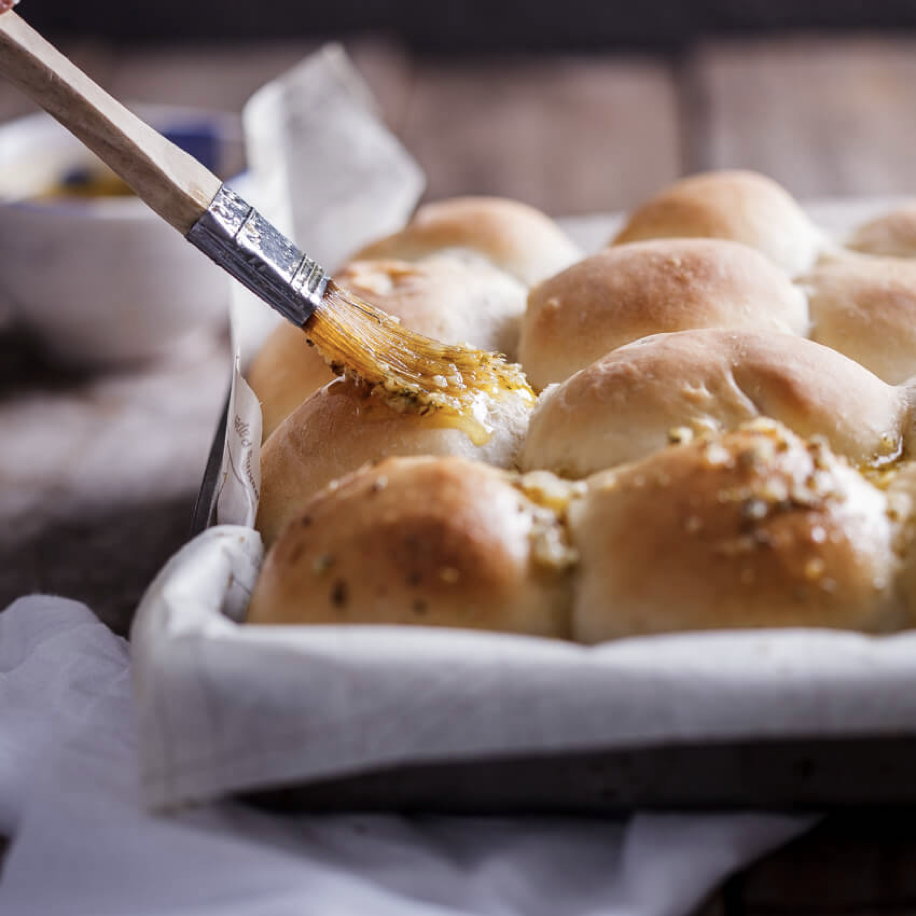Fine Cooking’s EASY TRICK
I was reading an old copy of Fine Cooking Magazine (part of my Aunt Annie’s collection) and discovered how one cook's secret weapon adds a touch of elegance to meat, fish, pastas, breads and dinner rolls, and even potatoes. The article was written by Tony Rosenfeld, and the secret weapon he talked about was flavored butters—fine cooking’s easy trick.

While we’re all well-acquainted with honey-butter, Tony suggests branching out, incorporating fresh herbs and spices. Lemon-herb butter, for instance, is the perfect finishing touch for grilled salmon on a bed of sautéed corn, lima beans, and shiitake mushrooms.
Flavored butters are Tony’s GO-TO for jazzing up a ho-hum dish. No matter the occasion or the meal, he says they add a touch of elegance, dressing up simple roasts and sautés or jazzing up steamed vegetables or plain pastas. They add surprise to mashed potatoes and extra sparkle to any dinner roll.

“The magic of flavored butters (also known as compound butters) is that their essence remains safely locked up in a state of hibernation until the instant they're melted onto whatever you're cooking,” Tony says. “Then, the flavors come pouring out. All it takes is a little pat of flavored butter and the most mundane of meals—a grilled steak, a sautéed pork chop, a roasted piece of fish—becomes special.”
I completely agree—my food has experienced this transformation. This little touch takes average, so-so cooking to a whole new level. And what’s especially nice is how easy they are to make. And inspiration for them is all around—just look no further than the pantry or refrigerator for flavor inspiration. Citrus juice and zest, fresh herbs, spices, and full-flavored ingredients like shallots, scallions, ginger, sun-dried tomatoes, and olives complement butter's richness and give it a good punch.
And what’s especially nice is that you don’t need a recipe for these. It’s all about personal preference. I’ve found over time, however, that for us, a ratio of 1 to ½ works well—1 cup butter to ½ cup of whatever I want to incorporate. But starting out, you might want to go more conservative, say 1 cup to ¼ cup of flavor.
One of our favorites is sun-dried tomatoes and fresh basil butter. To one stick of butter, I add ¼ cup chopped sun-dried tomatoes (oil-packed) and about ¼ to 1/3 cup of finely chopped fresh basil. I also like a couple cloves of minced garlic mixed into this.

Next, mix and mash these bright ingredients with a stick of softened butter until they're well combined. You can do this by hand, or you can use a food processor. The food processor works especially well for emulsifying liquids like citrus juice into the butter, and it's also handy when you don't have time to let the butter soften completely.
Then fold the plastic over the butter, hold a ruler against the butter, and pull on the lower end of the plastic to produce even pressure that will squeeze the butter into a uniform log.

Finally, roll up the butter in plastic wrap, parchment, or waxed paper and refrigerate for up to two weeks. For longer storage, you can slice the butter into pats and freeze in zip-top freezer bags, where they'll be ready to go whenever you need a quick hit of flavor.
Try any flavored butter on dinner rolls right out of the oven. The taste is amazing and completely unexpected.

Once you get the hang of this, you’ll be whipping up flavored butters of your own invention for all sorts of purposes. Talk about a fun and EASY TRICK to fine cooking!

While we’re all well-acquainted with honey-butter, Tony suggests branching out, incorporating fresh herbs and spices. Lemon-herb butter, for instance, is the perfect finishing touch for grilled salmon on a bed of sautéed corn, lima beans, and shiitake mushrooms.
Flavored butters are Tony’s GO-TO for jazzing up a ho-hum dish. No matter the occasion or the meal, he says they add a touch of elegance, dressing up simple roasts and sautés or jazzing up steamed vegetables or plain pastas. They add surprise to mashed potatoes and extra sparkle to any dinner roll.

“The magic of flavored butters (also known as compound butters) is that their essence remains safely locked up in a state of hibernation until the instant they're melted onto whatever you're cooking,” Tony says. “Then, the flavors come pouring out. All it takes is a little pat of flavored butter and the most mundane of meals—a grilled steak, a sautéed pork chop, a roasted piece of fish—becomes special.”
I completely agree—my food has experienced this transformation. This little touch takes average, so-so cooking to a whole new level. And what’s especially nice is how easy they are to make. And inspiration for them is all around—just look no further than the pantry or refrigerator for flavor inspiration. Citrus juice and zest, fresh herbs, spices, and full-flavored ingredients like shallots, scallions, ginger, sun-dried tomatoes, and olives complement butter's richness and give it a good punch.
And what’s especially nice is that you don’t need a recipe for these. It’s all about personal preference. I’ve found over time, however, that for us, a ratio of 1 to ½ works well—1 cup butter to ½ cup of whatever I want to incorporate. But starting out, you might want to go more conservative, say 1 cup to ¼ cup of flavor.
One of our favorites is sun-dried tomatoes and fresh basil butter. To one stick of butter, I add ¼ cup chopped sun-dried tomatoes (oil-packed) and about ¼ to 1/3 cup of finely chopped fresh basil. I also like a couple cloves of minced garlic mixed into this.

Next, mix and mash these bright ingredients with a stick of softened butter until they're well combined. You can do this by hand, or you can use a food processor. The food processor works especially well for emulsifying liquids like citrus juice into the butter, and it's also handy when you don't have time to let the butter soften completely.
Then fold the plastic over the butter, hold a ruler against the butter, and pull on the lower end of the plastic to produce even pressure that will squeeze the butter into a uniform log.

Finally, roll up the butter in plastic wrap, parchment, or waxed paper and refrigerate for up to two weeks. For longer storage, you can slice the butter into pats and freeze in zip-top freezer bags, where they'll be ready to go whenever you need a quick hit of flavor.
Try any flavored butter on dinner rolls right out of the oven. The taste is amazing and completely unexpected.

Once you get the hang of this, you’ll be whipping up flavored butters of your own invention for all sorts of purposes. Talk about a fun and EASY TRICK to fine cooking!
Sources:
- www.finecooking.com
- www.sisterspice.com
- www.pauladeencom
- www.cookidoo.co.uk
- www.simply-delicious-food.com
 Alice Osborne
Alice Osborne
Weekly Newsletter Contributor since 2006
Email the author! alice@dvo.com
